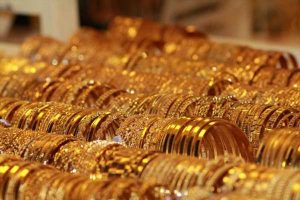Gold monetisation scheme: What you must know

Banks and friendly neighbourhood jewellers can serve as good channels to provide liquidity for gold deposits with built-in incentives for them, suggests Harsh Roongta.
You may read this article after Budget 2021 is announced, but please remember that it was written before that.
This Budget is widely expected to have a strategy for harnessing the private stock of 25,000 tonnes of gold worth around Rs 125 lakh crore sitting in Indian households and various private entities.
The existing gold monetisation scheme has garnered a meagre 20 tonnes, which is less than 0.10 per cent of the existing stock of gold.
Despite a big fall in gold imports in 2020, India continues to be among its top importers in the world.
The import of the yellow metal is a drain on the country’s precious foreign exchange.
Many factors inhibit the conversion of physical gold into a financial asset, with the underlying asset being gold (as happens in the gold monetisation scheme).
Most have to do with the restrictions, high GST (goods and services tax) and other issues on trade that inhibit dealing in used gold.
Let me point out a few issues that inhibit the common investor from using the gold monetisation scheme.
First, the general public is not aware about the scheme.
A massive advertisement campaign is required for the scheme to make it into the public’s consciousness.
Second, and most important, the number of places where physical gold can be tendered is so limited and the staff at those places so ill-trained that the scheme becomes a non-starter at that stage itself.
The friendly neighbourhood jewellers and bank branches, both of whom enjoy public trust and have the security infrastructure to handle gold tendering, will need to be roped in, if this scheme is to be a success.
Third, the processes between tendering the gold and crediting of the gold to the customer’s account will need to be made verifiable, time bound, and accountable to ensure it enjoys the customer’s trust.
Fourth, there needs to be clarity around what can be considered as adequate proof of cost and date of acquisition from an income-tax point of view.
Individuals may not have proper records about their gold holdings even though it might have been bought with proper, tax-paid money.
While there is a tax department circular dating back to 1994 that effectively allows up to 500 grams of gold holdings for a married woman, 250 grams for an unmarried woman, and 100 grams for a male individual without being explained by disclosed income, including inheritance, it would be best if this is adequately explained in the specific context of the gold monetisation scheme with proper FAQs (frequently asked questions) explaining the department’s viewpoint.
There also needs to be clarity on whether the capital gains from the date of acquisition of physical gold to its conversion into the gold monetisation scheme will be taxable, and if so, when.
There is a clear case for exempting this capital gain from taxation.
This decision should be taken explicitly.
Fifth, there needs to be liquidity for these deposits.
Again, banks and friendly neighbourhood jewellers can serve as good channels to provide liquidity for these deposits with built-in incentives for them.
Driven by increasing financial literacy, many individuals will be willing to convert their existing physical gold holdings into a gold deposit if some of the issues raised above are addressed through appropriate policy measures.
While the issues related to jewellers and trade are very important to make sure that the gold monetisation scheme takes off, the above issues related to individuals will need to be addressed as well for the eventual success of the scheme.
Harsh Roongta heads Fee Only Investment Advisers LLP, a Sebi-registered investment adviser.
- MONEY TIPS
Source: Read Full Article
